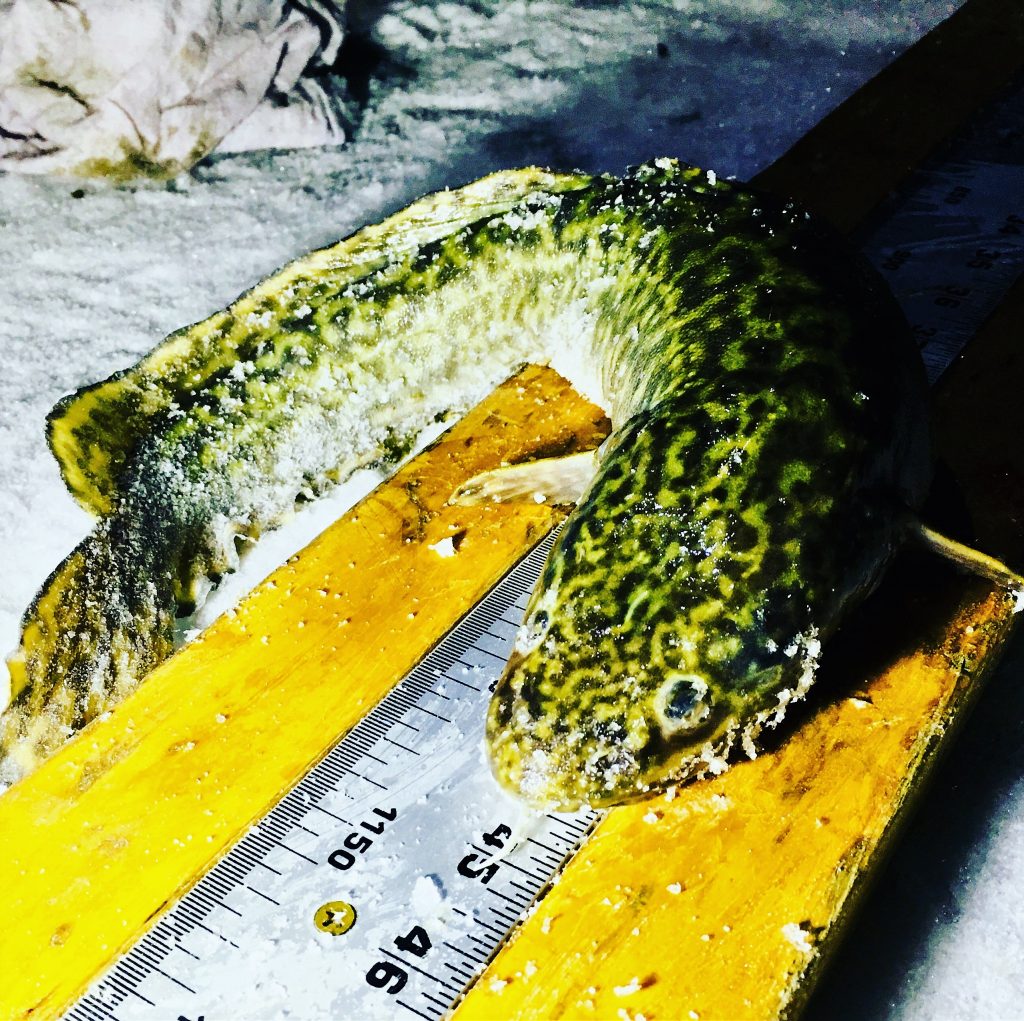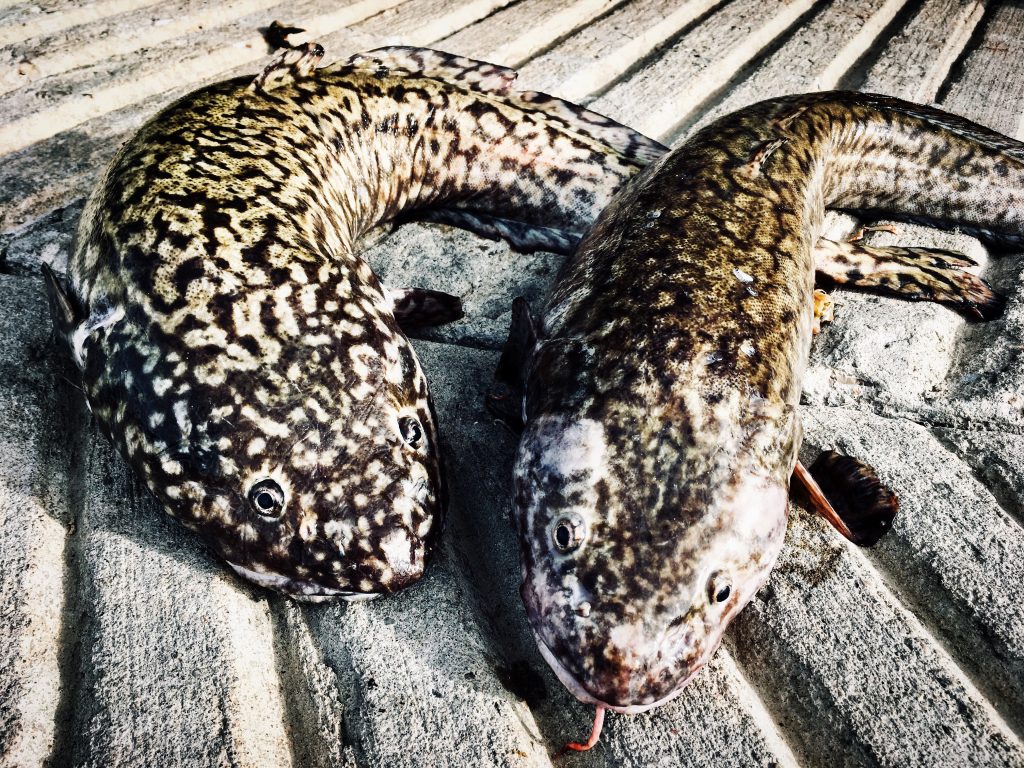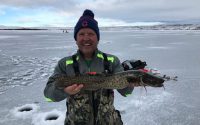3791 Burbot Now on Ice

The 2019 Burbot Bash, held on the ice at Flaming Gorge Reservoir in far northeast Utah and Southwest Wyoming, is in the books. Held the last week of January, 695 participants forming 212 teams, took to the ice to catch as many burbot as possible in the three-day event. Knowing that every burbot caught is one less to eat smallmouth bass, kokanee salmon or lake trout eggs, this annual tournament helps curb the spread on this invasive species, while giving fisheries managers important information as how to better manage the species.
As previously reported, burbot were illegally introduced into Flaming Gorge very near the turn of the century (2000). It is a very aggressive species that spawns under the ice in late winter, and preys on anything that swims that can fit in their catfish-like mouths. They look like a cross between a catfish and an eel and although their aggression is duly noted, they are most active
The Purpose for the Burbot Bash
The Burbot Bash is the single best way to chart the spread and proliferation of the species as they relentlessly move south from the Green River towards the dam. It is obvious from the tournament results that some teams simply know how and where to catch fish. In three days, 79 teams caught more than 10 burbot, 62 teams caught from one to 10 fish, and 71 teams caught no fish. Obviously, finding and catching fish was not universal.
Ryan Mosely of the Utah Division Of Wildlife Resources (UDWR) has followed the spread of burbot down the lake from Wyoming into Utah. “We are now seeing burbot at the dam and a loss of smallmouth bass even in parts of the canyon near Sheep Creek,” he says, “which means their presence is being felt all over the reservoir.”
The Burbot Challenge
The challenge for fishery managers is complex. Burbot are too well established for them to believe that the Burbot Bash will help control the population. Yet, there is no way to tell how much more devastation (like the demise of smallmouth bass) can the reservoir handle. Even magnificent fisheries such as Flaming Gorge are not immune to infestations of new species that threaten the quality of the fishery.
The good news is that burbot are being preyed upon by most of the species in the lake. Smallmouth bass, rainbow trout, lake trout, and catfish eat as many small burbot as they can catch, and in a way, that food source improves the overall fishery. Also, having another prey species in the reservoir allows other prey species like crayfish to increase in numbers.
Eventually, it is believed that burbot will blend into the mix of fish in Flaming Gorge and become “just another species,” finding its niche and staying within the bounds Nature sets for fish populations.
In the short term, however, I do believe two specific things could be done by officials to better the odds for maintaining the fishery and even making it better.

Two Ideas for Managing Burbot
First, I propose a smallmouth bass stocking program that would put 10-inch smallmouth in the lake in such numbers as to limit the immediate predation by burbot and other trout species. I realize this would be very expensive and difficult to handle within the hatchery systems of both Wyoming and Utah. However, I truly believe this is possible to accomplish if biologists, wildlife officials, and even legislators get on the right page.
Second, we should hold a series of night fishing tournaments throughout the summer to attempt to catch 10 times (or more) burbot each year than the nearly 4000 burbot caught in the very successful Burbot Bash. Since every burbot caught must be killed, and with the annual success of the current Burbot Bash already proven, this might even be a boon to the local economy with participants exchanging their ice augers for boat anchors.
Regardless of whether or not suggestions like mine are acted upon, the annual Burbot Bash continues to do its part in removing burbot and helping water managers monitor their spread. Thanks to everyone that participated!










